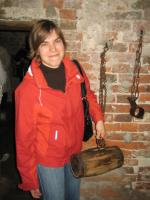Inproceedings,
Information Retrieval in Folksonomies: Search and Ranking
Proceedings of the 3rd European Semantic Web Conference, (2006)
Abstract
Social bookmark tools are rapidly emerging on the Web. In such systems users are setting up lightweight conceptual structures called folksonomies. The reason for their immediate success is the fact that no specific skills are needed for participating. At the moment, however, the information retrieval support is limited. We present a formal model and a new search algorithm for folksonomies, called FolkRank, that exploits the structure of the folksonomy. The proposed algorithm is also applied to find communities within the folksonomy and is used to structure search results. All findings are demonstrated on a large scale dataset.
Tags
- 2006
- 2007
- adapted_pagerank
- algorithm
- alphabetic
- analysis
- ausleihen
- award
- bibsonomy
- bibsonomy:selected
- blueprint
- bookmark
- concept
- crawl
- cv1
- da
- dblp
- definition
- del.icio.us
- diplomarbeit
- dipl_literatur
- diss
- eswc_2006
- fca
- folkrank
- folkrank,
- folksonomies
- folksonomy
- folksonomy,
- folksonomy_background
- folktrails
- formal
- formal_concept_analysis
- from:hotho
- from:markusjunker
- graph
- iccs_example
- iim_socsoft
- imported
- information
- informationbehavior
- informationretrieval
- information_retrieval
- inthesis
- ir
- itegpub
- kassel


















































































